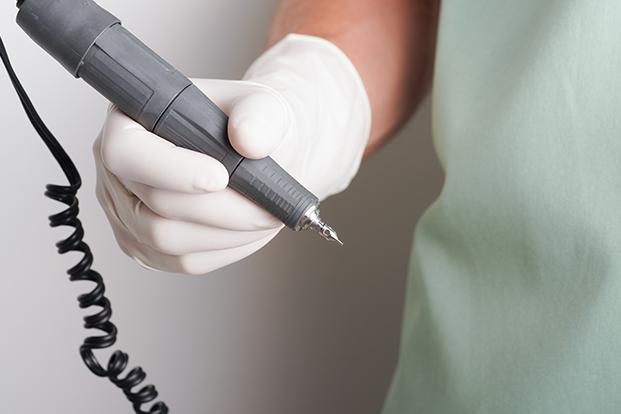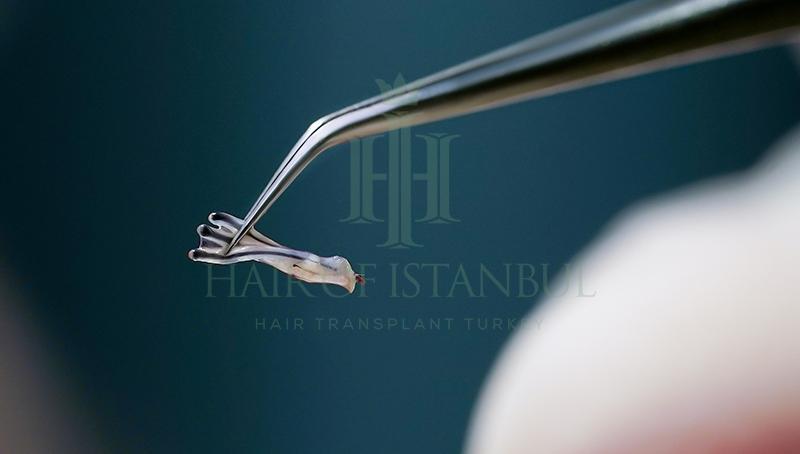What Is a Revision Hair Transplant?
A revision hair transplant, also known as a corrective hair transplant or secondary hair restoration, is a surgical procedure aimed at improving the aesthetic or medical outcomes of a previous, unsatisfactory hair transplant.
This may involve adjusting an unnatural hairline, increasing density in sparse areas, correcting poor graft placement, or addressing scarring. Revision procedures require a highly experienced surgical team, as they are often more complex and delicate than first-time transplants.

Why Is a Revision Hair Transplant Performed?
Unsatisfactory Results: Poor hairline design, low density, or uneven graft distribution
Visible Scarring: Especially common in patients who underwent the older FUT (strip) method
Progressive Hair Loss: Hair loss may continue after the initial transplant, revealing new bald areas
Desire for Higher Density: Patients may want to enhance the fullness of previously transplanted zones
How Is a Revision Hair Transplant Done?
A revision procedure requires careful planning and medical expertise. At Hair of Istanbul, our doctors evaluate:
- The current donor area condition
- Any visible scars or previous incisions
- Placement and quality of existing grafts
- Overall hair structure and direction
Based on this analysis, we typically use the FUE (Follicular Unit Extraction) technique, though in specific cases, the FUT method may be applied. The primary goal is to deliver more natural, dense, and aesthetically pleasing results.
Frequently Asked Questions About Revision Hair Transplant
Can a Hair Transplant Be Corrected?
Yes. Unsuccessful transplants can be corrected, but only by an experienced medical team.
Reputable clinics will take the necessary steps to repair poor results.
However, the process may involve additional travel, accommodations, and procedure costs.
Can You Have a Hair Transplant Twice?
Yes, many patients undergo a second FUE procedure, and in rare cases, even a third session.
Subsequent operations follow a similar process, but careful donor area planning is essential for each session to avoid overharvesting.
What Happens 10 Years After a Hair Transplant?
Longevity of Transplanted Hair: Properly transplanted follicles generally last for a lifetime
Continued Genetic Hair Loss: Native hair may continue thinning in untreated areas
Follow-Up Sessions: Some patients choose additional sessions to maintain density
Scarring: FUT may leave a linear scar; FUE typically leaves minimal or no visible scarring
Effects of Aging: Hair color, texture, and density may change naturally with age
Lifestyle & Hair Care: Healthy habits and proper care can enhance long-term results

Follow-Up Care at Hair of Istanbul
Ongoing communication with your doctor is essential after any hair transplant. At Hair of Istanbul, we provide:
- Regular follow-up consultations
- Early detection of potential issues
- Supportive therapies when needed
Our team is dedicated to ensuring the long-term success and satisfaction of every patient
In the weeks and months following your procedure, our medical staff will remain closely involved in your recovery process. We’ll check in with you regularly to monitor healing, hair growth progress, and overall scalp health. If any concerns arise—such as redness, itching, or slower-than-expected growth—we will immediately guide you with personalized recommendations. Our approach is always proactive rather than reactive.
We also provide aftercare kits tailored to your individual needs, which may include medical-grade shampoos, nourishing serums, and vitamins to support healthy growth. In some cases, additional treatments like PRP (Platelet-Rich Plasma) or Mesotherapy may be suggested to further enhance results and stimulate new follicle activity in weaker areas.
At Hair of Istanbul Hair, aftercare is never an afterthought. We see it as a vital extension of the transplant itself—because true success lies not only in the procedure, but in the journey that follows. Your transformation deserves continuous care, expert guidance, and lasting results. We are here for you every step of the way, with expertise, compassion, and a commitment to excellence.
At Hair of Istanbul, aftercare is never an afterthought. We see it as a vital extension of the transplant itself—because true success lies not only in the procedure, but in the journey that follows. Your transformation deserves continuous care, expert guidance, and lasting results.
 en
en  TR
TR  SK
SK  ITA
ITA  FR
FR  DE
DE  ES
ES  BG
BG